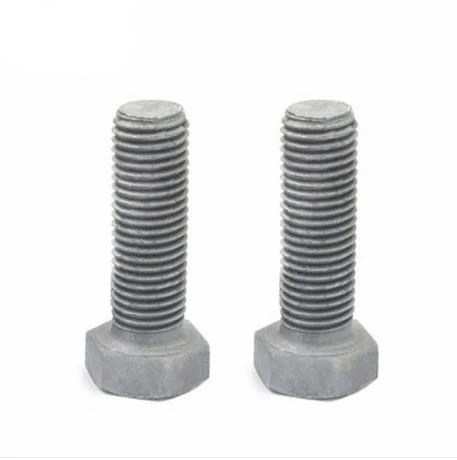

m10x1 0 flange nut
Nov . 11, 2024 09:41 Back to list
m10x1 0 flange nut
Understanding M10x1 Flange Nuts Definition, Features, and Applications
In the realm of fasteners, specific types hold particular importance due to their unique design features and diverse applications. One such fastener is the M10x1 flange nut, which is widely used in various industries, including automotive, construction, and engineering. This article explores the characteristics, benefits, and applications of M10x1 flange nuts, providing a comprehensive overview for those interested in fastener solutions.
Definition and Specifications
An M10x1 flange nut is a type of nut with a metric thread size of 10 mm and a pitch of 1 mm. The “M” denotes that it is a metric fastener, which is essential in regions that use the metric system. The flange is a significant feature of this nut, acting as a built-in washer that provides a larger bearing surface. This design helps to distribute the load and increases the nut's resistance to loosening under vibration or dynamic load conditions.
Flange nuts come in various materials, including steel, stainless steel, and brass, each chosen based on the application's specific requirements. Coatings such as zinc or nickel plating can also be applied to enhance corrosion resistance, making them suitable for outdoor usage or in humid environments.
Features and Benefits
1. Load Distribution The flanged design of the M10x1 nut allows for excellent load distribution across a larger area. This feature minimizes the risk of damage to the surfaces they are affixed to, making them ideal for use in sensitive applications.
2. Vibration Resistance One of the primary advantages of using flange nuts is their ability to resist loosening due to vibrations. The larger surface area increases friction and helps keep the nut securely in place, an essential feature in automotive and machinery applications.
3. Ease of Use Flange nuts are typically easier to install than standard nuts since they don't require an additional washer. This can save time and simplify assembly processes in manufacturing and construction.
m10x1 0 flange nut

4. Versatility These nuts are incredibly versatile and can be used in various applications, from vehicle assembly to heavy machinery construction and even household projects.
Applications
M10x1 flange nuts are employed in myriad applications due to their unique attributes. Here are some notable examples
- Automotive Industry In vehicles, these nuts are often used in engine assembly, chassis connections, and suspension components due to their durability and resistance to vibration. They provide secure fastening that is crucial for the safe operation of vehicles.
- Heavy Machinery In industrial applications, M10x1 flange nuts are frequently utilized in the assembly of heavy machinery. The ability to handle dynamic loads makes them a favorable choice in environments where machines are subjected to continuous stresses.
- Construction In construction projects, these nuts are used to secure structural components, ensuring stability and safety in buildings and bridges. Their ability to withstand outdoor conditions makes them suitable for various constructions.
- Household Items Beyond industrial applications, M10x1 flange nuts can also be found in common household items, including furniture and bicycles, providing straightforward fastening solutions.
Conclusion
The M10x1 flange nut represents an essential component in the fastener world, combining design ingenuity with practical applications. Its robust features, such as load distribution and vibration resistance, make it a preferred choice in various sectors. Whether you're working in automotive assembly, heavy machinery, construction, or home improvement, understanding the benefits and uses of M10x1 flange nuts can facilitate better decision-making and enhance the effectiveness of your projects. As industries continue to evolve, the demand for reliable and efficient fastening solutions like the M10x1 flange nut remains strong.
Latest news
-
High-Strength Hot Dip Galvanized Bolts - Hebei Longze | Corrosion Resistance, Customization
NewsJul.30,2025
-
Hot Dip Galvanized Bolts-Hebei Longze|Corrosion Resistance&High Strength
NewsJul.30,2025
-
High-Strength Hot-Dip Galvanized Bolts-Hebei Longze|Corrosion Resistance&High Strength
NewsJul.30,2025
-
Hot Dip Galvanized Bolts-Hebei Longze|Corrosion Resistance&High Strength
NewsJul.30,2025
-
Hot Dip Galvanized Bolts - Hebei Longze | Corrosion Resistance, High Strength
NewsJul.30,2025
-
High-Strength Hot Dip Galvanized Bolts-Hebei Longze|Corrosion Resistance, Grade 8.8
NewsJul.30,2025

